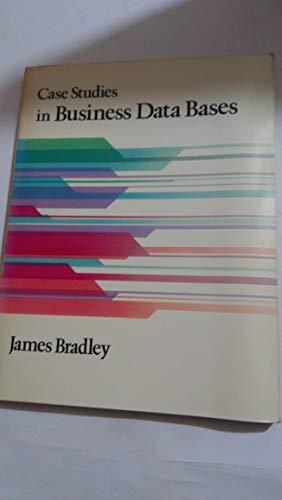Question
4. Read through the IOUG Case Study listed below. As a group develop an ER diagram for the situation. Be sure to tag each attribute
4. Read through the IOUG Case Study listed below. As a group develop an ER diagram for the situation. Be sure to tag each attribute with its optionality. Each group will be given 10 minutes to present its solution in the next Section. You will be required to prepare each of the following:
Statement of the problem: Why has the IOUG approached you? What help do they need?
Statement of the proposed solution: How can you help them solve their problem? What are your recommendations?
The information requirements of the business/organization clearly stated: What data do they need to track and what information do they need to get out of the data?
The business rules as they apply to the information requirements of the company/organization stated as single sentences: What business rules can you formulate from the given scenario?
The assumptions clearly stated that had to be considered in developing the solution: What assumptions did you have to make in developing your solution?
Entity relationship model
IOUG CASE STUDY Our regional Oracle Users Group has grown to include over 200 members. Were an all-volunteer organization of working adults and secondary-school students, and our records are a mess. We need an information system to help us keep track of our business. We definitely need to automate our membership records. For each member, we need to keep the members name, title, mailing address, office or home phone number, type of membership (individual or corporate), and whether or not the member is has paid the dues (is the member current?). We collect dues on a yearly basis, and they are due in January.
We also like to know which company a member works for or which school they attend, but keeping this information current is difficult because our members are always changing companies or addresses or graduating from school. We try to track only a single current employer for each member. Our members come from many different companies, including Sony, EG&G, and Storage Tech, as well as several different local high schools. A few of our members are unemployed. For each company, we keep the company name, address, and type of business. For each secondary school, we keep the school name and address. We have a standard set of types of businesses and high-school codes. We keep only the main company address for each company.
We hold various events during the year, and wed like to track information about each event. Some of our annual events include the September Meeting, the November Meeting, the annual Training Day in January, and our April Meeting. We also hold special events each year.
For example, we held a special CASE (Computer Aided Systems Engineering) day last May, and Richard Barker from Oracle U.K. came and spoke. We hold our events at several different locations around town, including AT&T, Redrocks Community College, and Skyline University. Wed like to track each events date, optional description of the event, number of attendees, where it was held, how much money we spent on it, and any comments on the event. We treat all comments as if they came from an anonymous submitter. A set of comments is a free-form text statement of any length. We number each set of comments, and we frequently get multiple sets of comments for an event.
We also track which members attended which events. Some of our members are really active, and others attend very infrequently or just enjoy receiving our newsletter.
We also need to track what type of computer platforms our members are using. We have a unique, three-digit system identification tag for each type of platform. For example, 001 is for UNIX; 002 is for RAC & HA; 003 is for Oracle on Windows; 020 is for Oracle Spatial; 030 is for Oracle & .NET; 050 is for DBMS; and 080 is for Business Intelligence & Reporting Tools.
We also like to track which application areas each member is interested in. Sample application areas include accounting, human resources, entertainment, oil and gas, pharmaceuticals and health systems. The applications should be portable, so we dont need to know which platforms they run on.
Step by Step Solution
There are 3 Steps involved in it
Step: 1

Get Instant Access to Expert-Tailored Solutions
See step-by-step solutions with expert insights and AI powered tools for academic success
Step: 2

Step: 3

Ace Your Homework with AI
Get the answers you need in no time with our AI-driven, step-by-step assistance
Get Started


